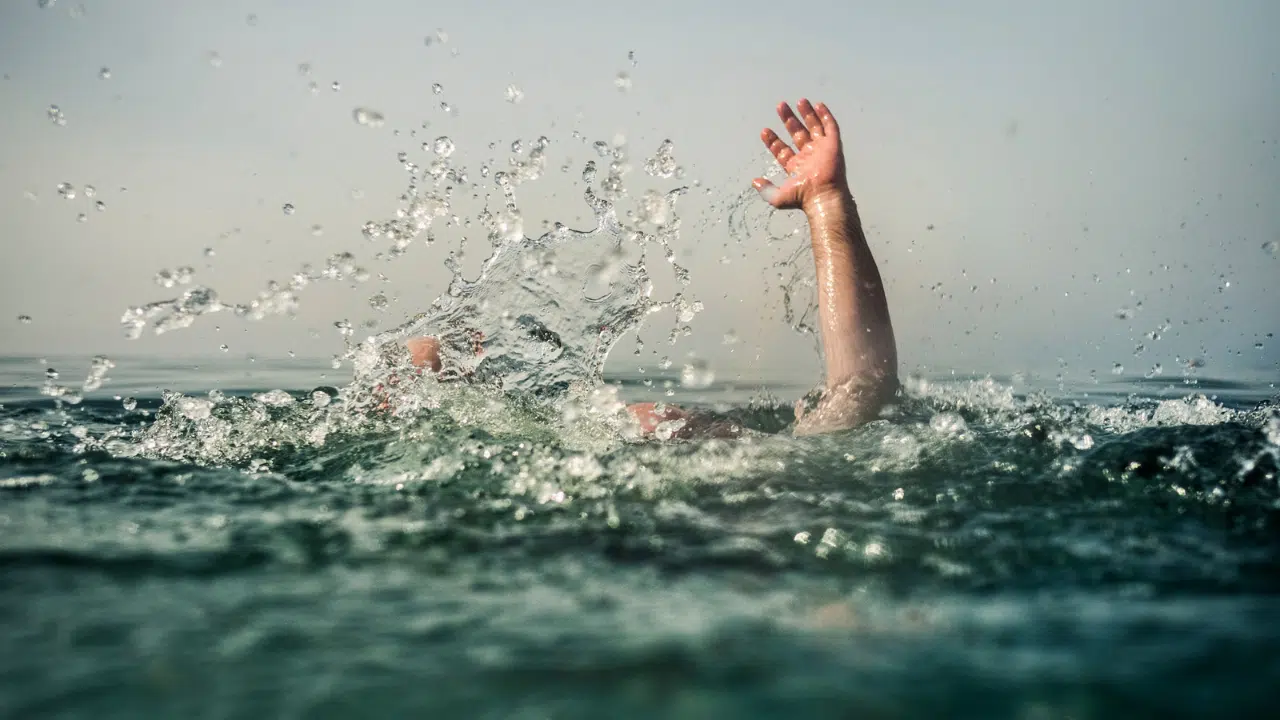
Fun in the sun is even better when you can cool off on hot summer days. There’s nothing better than a day at the pool, a pond, or the ocean to soak up the sun and splash in the cool water for some worry-free fun. If you spend time on or near the water you should make sure you and know how to detect when a person is in distress. Drowning is almost always a deceptively quiet event. The waving, splashing, and yelling that TV and movies have prepared us to look for is rarely seen in real life.
Honing this skill is critical, particularly since annually over 400 Canadians drown each year. This is an alarming and disturbing statistic considering drowning is preventable. In some cases, people are watching or are within yards of the victim and have no idea it is happening.
What Does Drowning Look Like?
Francesco A. Pia, Ph.D. is the person who coined the term instinctive drowning response. This is what people do to avoid actual or perceived suffocation in the water. When someone is drowning there is very little splashing, and no waving, yelling, or calling for help of any kind.
Dr. Pia, in an article he wrote for the Coast Guard’s On Scene magazine, described the instinctive drowning response like this:
- Except in rare circumstances, drowning people are physiologically unable to call out for help. The respiratory system was designed for breathing. Speech is a secondary or overlaid function. Breathing must be fulfilled before speech occurs.
- The mouths of drowning people alternately sink below and reappear above the surface of the water; they are not above the surface of the water long enough for the victims to exhale, inhale and call out for help. When the mouths are above the surface, they exhale and inhale quickly before sinking below the surface of the water
- Drowning people cannot wave for help. Nature instinctively forces them to extend their arms laterally and press down on the water’s surface. Pressing down on the surface of the water permits drowning people to leverage their bodies so they can lift their mouths out of the water to breathe.
- Throughout the instinctive drowning response, drowning people cannot voluntarily control their arm movements. Physiologically, drowning people who are struggling on the surface of the water cannot stop drowning and perform voluntary movements such as waving for help, moving toward a rescuer, or reaching out for a piece of rescue equipment.
- From the beginning to the end of the instinctive drowning response, the bodies of drowning people remain upright in the water, with no evidence of a supporting kick. Unless rescued by a trained lifeguard, these people can only struggle on the surface of the water from 20 to 60 seconds before submersion occurs.
This doesn’t mean that a person who is yelling for help and thrashing isn’t in real trouble—they are experiencing aquatic distress. Not always present before the instinctive drowning response, aquatic distress doesn’t last long, but unlike true drowning, these victims can still assist in their own rescue. They can grab lifelines, reach for throw rings, etc.
What to Watch For
There are other visual cues to look for when trying to recognize a drowning person. They include the following:
- Head tilted back with mouth open
- Head low in the water, with the mouth at water level
- Eyes glassy and empty, unable to focus
- Eyes closed
- Hair over forehead or eyes
- Not using legs
- Hyperventilating or gasping
- Trying to swim in a particular direction but not making headway
- Trying to roll over onto the back
- Appears to be climbing an invisible ladder
Sometimes the most common indication that someone is drowning is that they don’t look as if they’re drowning. They may just look as if they are treading water and staring up at the deck. One way to be sure? Ask, “Are you alright?” If they can answer at all, they probably are. If they return a blank stare, you may have less than 30 seconds to get to them. And parents, children playing in the water make noise. When they get quiet, you need to get to them and find out why.
Swimming Safety Tips
Drowning is one of the leading causes of death among children ages 1-4. During summer and while on vacation, practice proper swimming safety to prevent serious injuries and death with these tips:
Supervise Children:
- Carefully supervise children whenever they are swimming, playing in the pool, or near water. Never leave a child unattended near any body of water.
- Provide CSA-approved water wings, life jackets, PFD for all children.
Pool Safety
- Prevent drowning accidents by building a fence that is at least 1.2 meters / 4 feet high around the pool area.
- Install a self-closing and self-latching gate to prevent children from accessing the pool unsupervised.
- Put all toys away after swimming time is over. A floating toy can be an impulsive reach for a child, which can lead to a fall.
- If possible, keep a safety cover on the pool when not in use.
As a homeowner, you are liable for the safety of all swimmers. To ensure that you can adequately protect people on your property consider taking a CPR or first aid course so you know what to do in an emergency. For any questions about pools and your homeowner’s policy, please do not hesitate to reach out. Have a safe and happy summer!






